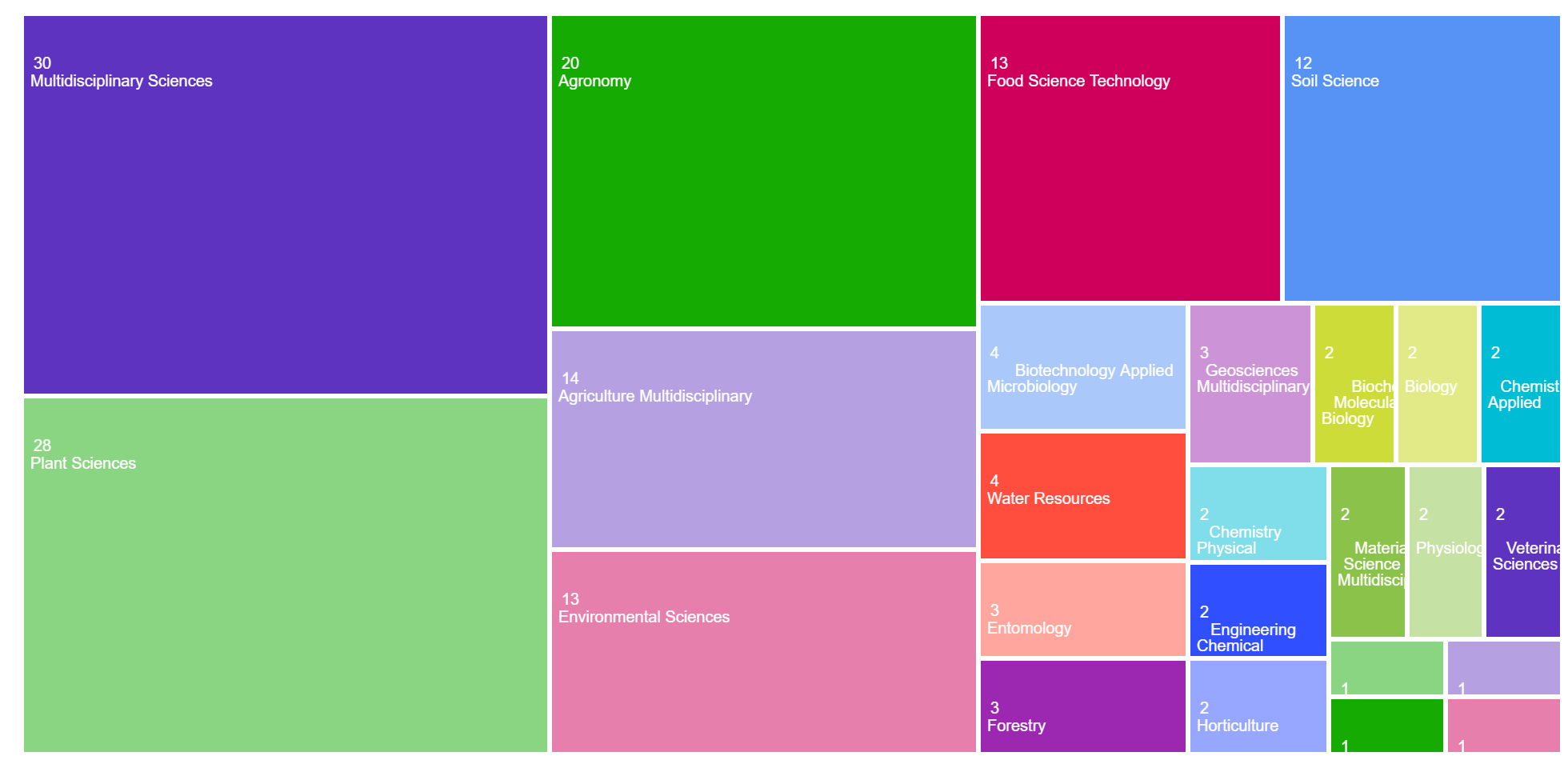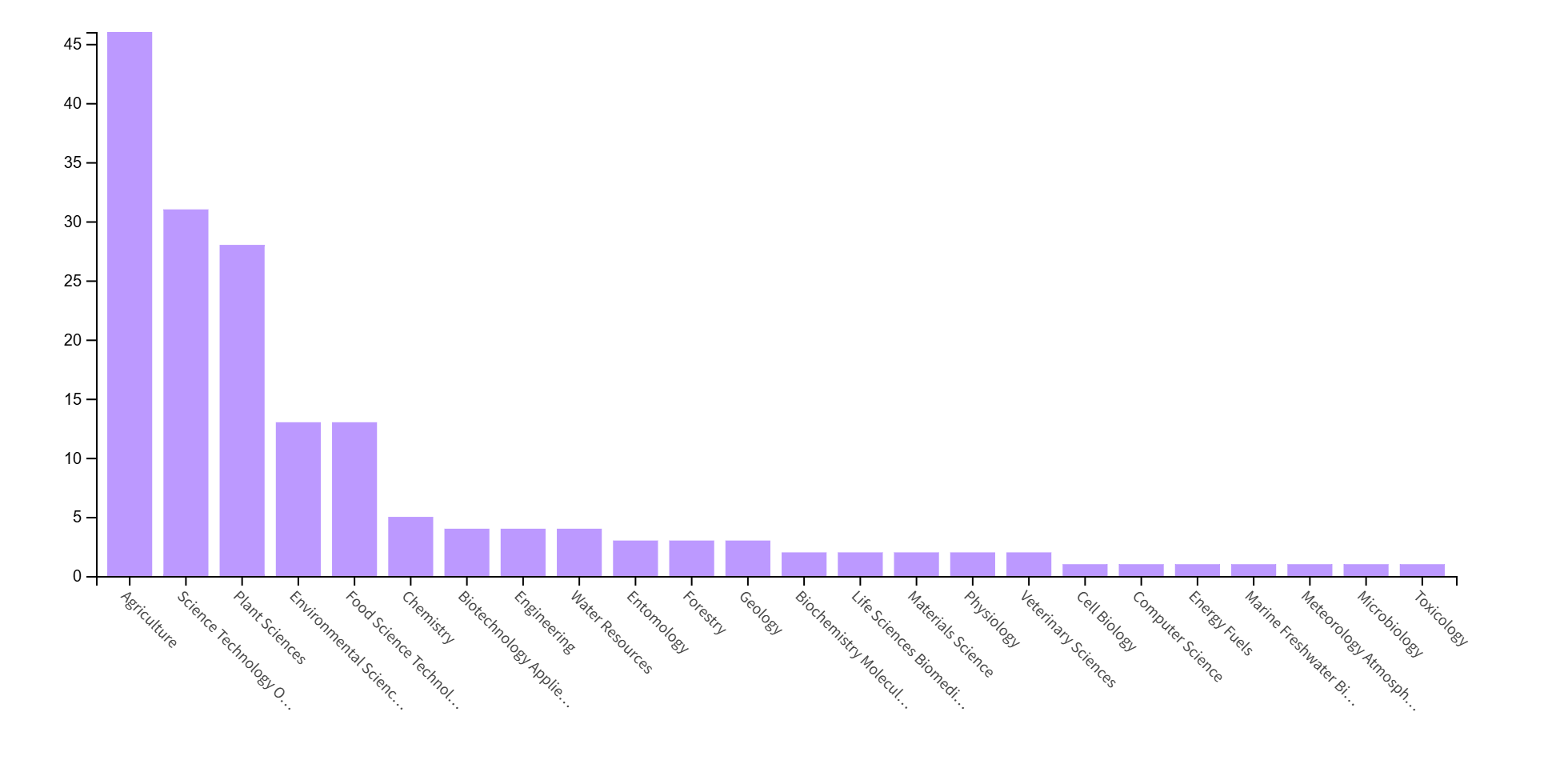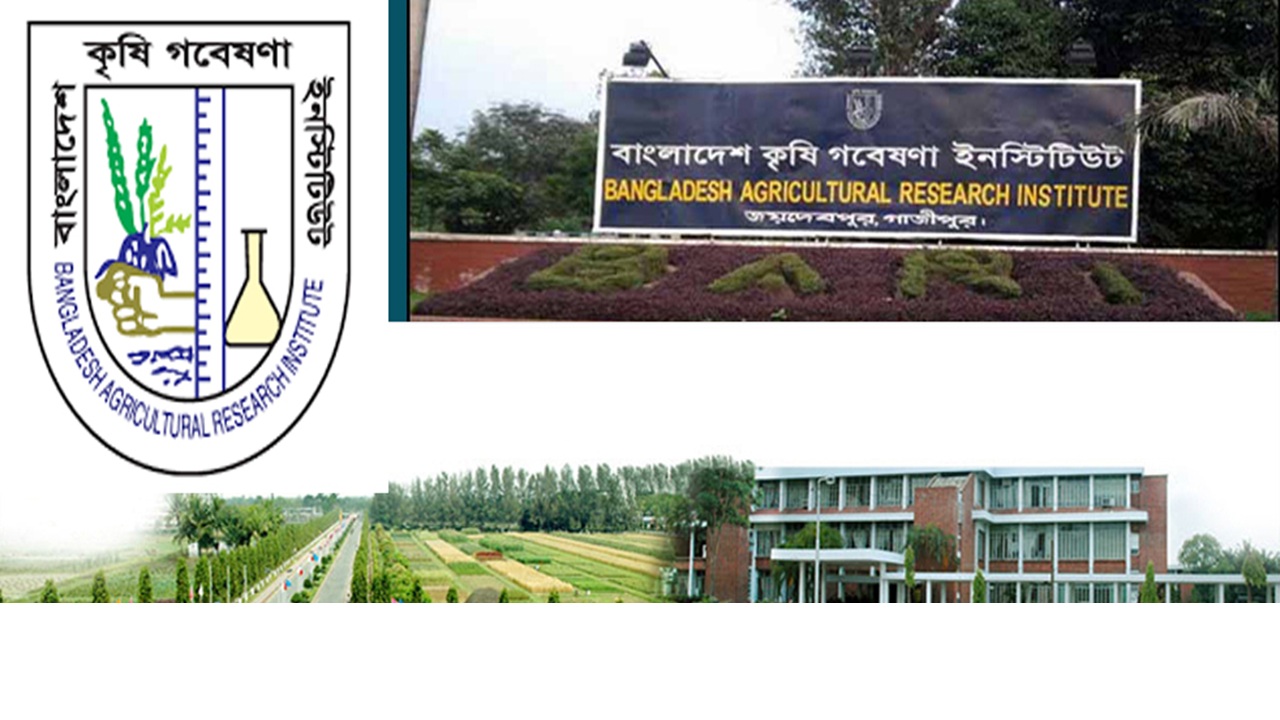
Significant contributions in the fields:
| Categories | Record Count | % of 125 |
|---|---|---|
| Multidisciplinary Sciences | 30 | 24.000% |
| Plant Sciences | 28 | 22.400% |
| Agronomy | 20 | 16.000% |
| Agriculture Multidisciplinary | 14 | 11.200% |
| Environmental Sciences | 13 | 10.400% |
| Food Science Technology | 13 | 10.400% |
| Soil Science | 12 | 9.600% |
| Biotechnology Applied Microbiology | 4 | 3.200% |
| Water Resources | 4 | 3.200% |
| Entomology | 3 | 2.400% |
| Forestry | 3 | 2.400% |
| Geosciences Multidisciplinary | 3 | 2.400% |
| Biochemistry Molecular Biology | 2 | 1.600% |
| Biology | 2 | 1.600% |
| Chemistry Applied | 2 | 1.600% |
| Chemistry Physical | 2 | 1.600% |
| Engineering Chemical | 2 | 1.600% |
| Horticulture | 2 | 1.600% |
| Materials Science Multidisciplinary | 2 | 1.600% |
| Physiology | 2 | 1.600% |
| Veterinary Sciences | 2 | 1.600% |
Research areas (Top 25):

Types of published documents:
| Document Types | Record Count | % of 125 |
|---|---|---|
| Article | 114 | 91.200% |
| Review Article | 7 | 5.600% |
| Correction | 4 | 3.200% |
| Data Paper | 3 | 2.400% |
| Early Access | 2 | 1.600% |
Authors’ infographic (25):

Researcher profiles (25):
| Researchers | Record Count | % of 125 |
|---|---|---|
| Hossain, Akbar | 14 | 11.200% |
| AKTER, SANJIDA | 12 | 9.600% |
| Alam, Zakaria | 12 | 9.600% |
| Sarker, Prof. Umakanta | 9 | 7.200% |
| Gaber, Ahmed | 7 | 5.600% |
| W. Bell, Robert | 7 | 5.600% |
| Rohman, Motiar | 7 | 5.600% |
| Roy, Dilip Kumar | 6 | 4.800% |
| Khan, Md Abdullah Al Mamun | 6 | 4.800% |
| Azam, Md Golam | 6 | 4.800% |
| Biswas, Arindam | 5 | 4.000% |
| Haque, Mohammad Amdadul | 5 | 4.000% |
| Molla, Dr. Mohammad Mainuddin | 5 | 4.000% |
| Ul Islam, Mahbub | 5 | 4.000% |
| Khatun, Mst. Fatima | 4 | 3.200% |
| Islam, Mahammad Shariful | 4 | 3.200% |
| Datta, Avishek | 4 | 3.200% |
| Rashid, M. H. | 4 | 3.200% |
| IUT, Nazmul Hossain | 4 | 3.200% |
| Gomasta, Joydeb | 4 | 3.200% |
| ISLAM, Mohammad SOHIDUL | 4 | 3.200% |
| Alam, Mukhtar | 3 | 2.400% |
| Mainuddin, Mohammed | 3 | 2.400% |
| Jahangir, Mohammad MR | 3 | 2.400% |
| Malik, Al Imran | 3 | 2.400% |
Research affiliations of BARI with other universities and institutes:

Research collaboration countries (Top 25):
-
Bangladesh – 125 (100.000%)
-
Australia – 25 (20.000%)
-
Saudi Arabia – 17 (13.600%)
-
Usa – 16 (12.800%)
-
Peoples R China – 12 (9.600%)
-
Egypt – 10 (8.000%)
-
Thailand – 6 (4.800%)
-
India – 5 (4.000%)
-
Japan – 5 (4.000%)
-
Turkiye – 5 (4.000%)
-
Laos – 4 (3.200%)
-
South Korea – 4 (3.200%)
-
Malaysia – 3 (2.400%)
-
Denmark – 2 (1.600%)
-
Philippines – 2 (1.600%)
-
Spain – 2 (1.600%)
-
Belgium – 1 (0.800%)
-
Cambodia – 1 (0.800%)
-
Czech Republic – 1 (0.800%)
-
England – 1 (0.800%)
-
Fiji – 1 (0.800%)
-
Germany – 1 (0.800%)
-
Greece – 1 (0.800%)
-
Somalia – 1 (0.800%)
-
Uganda – 1 (0.800%)
Sustainable development goals:

The publishers:
-
Elsevier – 45 (36.000%)
-
Springer Nature – 27 (21.600%)
-
Taylor & Francis – 8 (6.400%)
-
Springer Int Publ AG – 6 (4.800%)
-
Wiley – 6 (4.800%)
-
Mdpi – 5 (4.000%)
-
Nature Portfolio – 5 (4.000%)
-
Tech Science Press – 3 (2.400%)
-
Horizon E-Publishing Group – 2 (1.600%)
-
Public Library Science – 2 (1.600%)
-
Tubitak Scientific & Technological Research Council Turkey – 2 (1.600%)
-
Agricultural Research Communication Centre – 1 (0.800%)
-
Amer Phytopathological Soc – 1 (0.800%)
-
Bangladesh Botanical Soc – 1 (0.800%)
-
Csiro Publishing – 1 (0.800%)
-
E Schweizerbartsche Verlagsbuchhandlung – 1 (0.800%)
-
Frontiers Media Sa – 1 (0.800%)
-
Hindawi Publishing Group – 1 (0.800%)
-
Inst Bioloska Istrazivanja Sinisa Stankovic – 1 (0.800%)
-
Korean Society Animal Science & Technology – 1 (0.800%)
-
Pakistan Agricultural Scientists Forum – 1 (0.800%)
-
Pakistan Botanical Soc – 1 (0.800%)
-
Sabaragamuwa Univ Sri Lanka – 1 (0.800%)
-
Soc Field Crop Sci – 1 (0.800%)
-
Walter de Gruyter – 1 (0.800%)
Web of Science Index:
| Index | Record Count | % of 125 |
|---|---|---|
| Science Citation Index Expanded (SCI-EXPANDED) | 85 | 68.000% |
| Emerging Sources Citation Index (ESCI) | 40 | 32.000% |
Funding Agencies:

Research Highlights of BARI:
| Type | Result |
|---|---|
| Review Article | 7 |
| Early Access | 2 |
| Open Access | 76 |
| Enriched Cited References | 64 |
| Open publisher-invited reviews | 1 |



